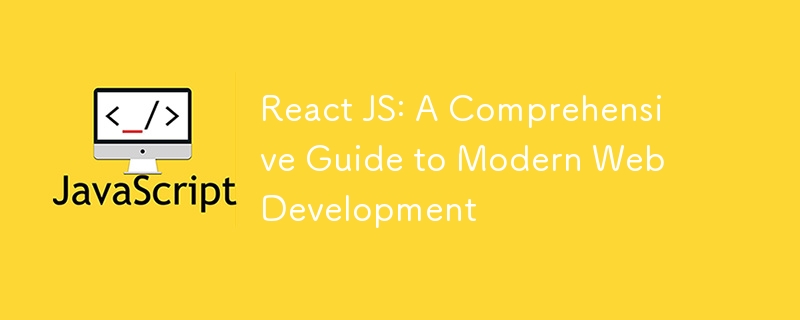
In today’s fast-evolving web development landscape, React JS stands out as a powerful tool for building dynamic and responsive user interfaces. Developed by Facebook, React has become a popular choice among developers for its flexibility and efficiency. This article aims to provide students with a deeper understanding of React JS and introduce some of its advanced features that can enhance their development skills.
Introduction to React JS
React JS is a JavaScript library used for building user interfaces, particularly single-page applications where dynamic data changes over time. Unlike traditional methods of DOM manipulation, React uses a virtual DOM to improve performance and make development more intuitive.
Key Concepts and Features of React JS
- Components:
- Functional Components: These are the simplest form of React components, written as JavaScript functions. They receive props (properties) and return React elements. With the introduction of hooks, functional components can now manage state and side effects.
- Class Components: Before hooks, class components were used to manage state and lifecycle methods. They are still in use but are gradually being replaced by functional components for their simplicity.
- JSX (JavaScript XML):
JSX is a syntax extension that allows you to write HTML-like code within JavaScript. It makes it easier to create and manage components by providing a more readable syntax.
- Props and State:
- Props: Short for properties, props are used to pass data from a parent component to a child component. They are immutable and help in making components reusable.
- State: State is used to manage dynamic data within a component. Unlike props, state is mutable and can be changed within the component using hooks or class methods.
- Hooks:
- useState: This hook allows functional components to have state. It returns a state variable and a function to update it.
- useEffect: This hook is used to perform side effects in functional components, such as fetching data or directly interacting with the DOM.
- Custom Hooks: You can create your own hooks to encapsulate logic and reuse it across multiple components.
- Context API:
- The Context API provides a way to share values between components without having to pass props down manually at every level. It’s useful for managing global state like user authentication or theme settings.
- React Router:
- React Router is a library used to handle routing in React applications. It allows you to define different routes and render corresponding components based on the URL.
- React DevTools:
- React DevTools is an extension for browsers that helps in debugging React applications. It provides insights into component hierarchy, props, state, and hooks.
- Performance Optimization:
- Memoization: React.memo and useMemo can help optimize performance by memoizing components and values that don’t change frequently.
- Code Splitting: Tools like React.lazy and Suspense allow you to split your code into smaller chunks, loading only what is needed at a time.
Advanced Topics
- Server-Side Rendering (SSR):
- Tools like Next.js enable server-side rendering for React applications, improving SEO and performance by rendering pages on the server before sending them to the client.
- Static Site Generation (SSG):
- Next.js also supports static site generation, allowing you to pre-render pages at build time. This can be beneficial for content-heavy sites where data doesn’t change frequently.
- State Management Libraries:
- Libraries like Redux and Zustand can help manage complex state logic and provide a more structured approach to handling application state.
- TypeScript Integration:
- Using TypeScript with React enhances development by providing static typing, which helps catch errors early and improve code maintainability.
Conclusion
- React JS is a versatile and powerful library that has transformed the way we build user interfaces. By understanding and utilizing its core concepts and advanced features, students can develop efficient, scalable, and maintainable web applications. Whether you’re building simple components or complex applications, mastering React will equip you with the skills needed for modern web development.
The above is the detailed content of React JS: A Comprehensive Guide to Modern Web Development. For more information, please follow other related articles on the PHP Chinese website!






